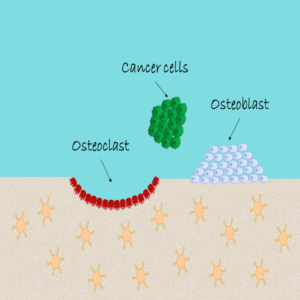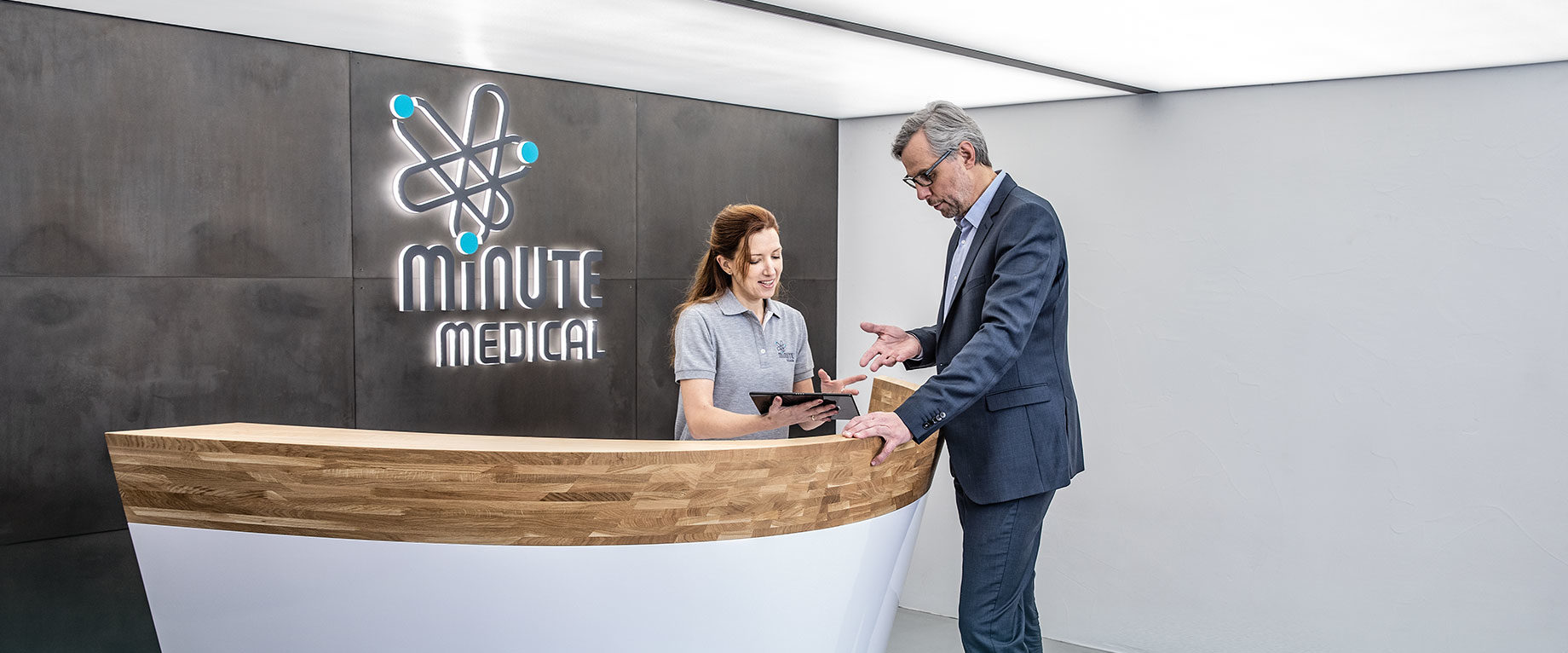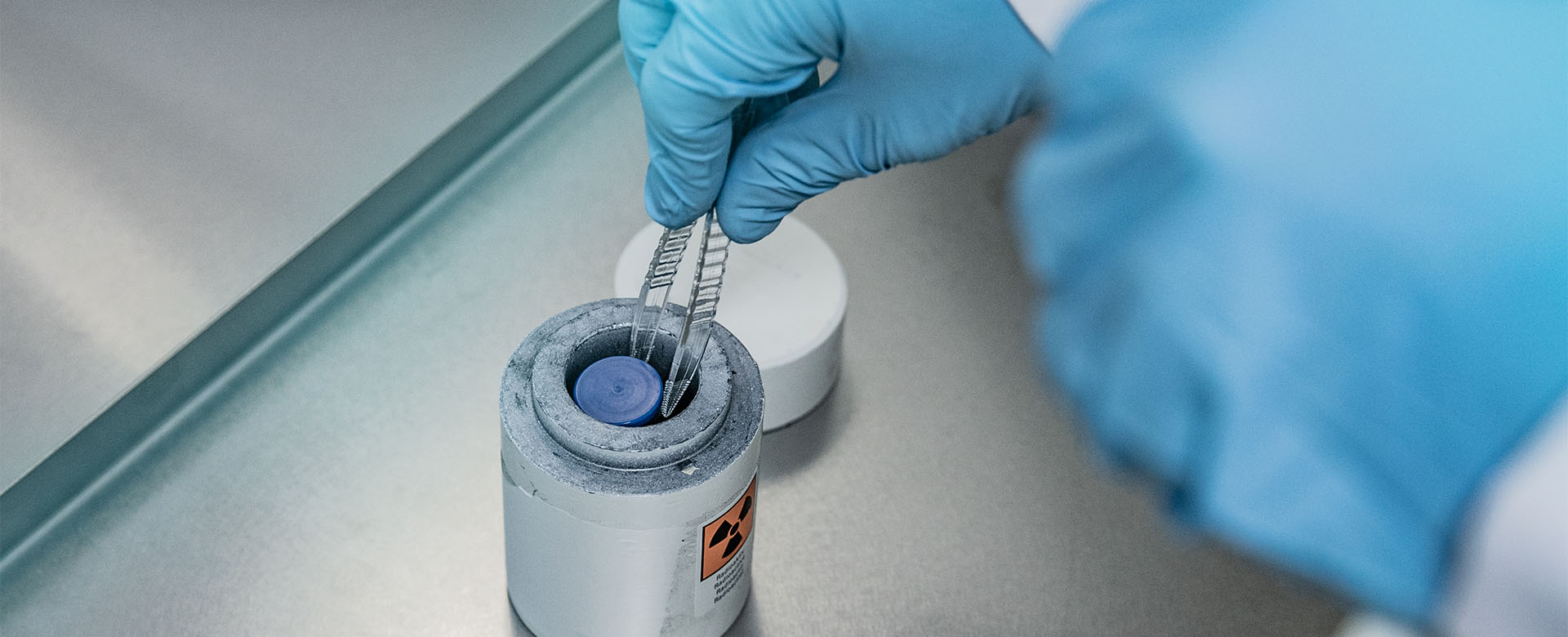Therapy of bone metastases using radium-223 dichloride (Xofigo®)
Radium-223 is an effective treatment against bone metastases. But depending on the (predominant) phenotype of bone lesions, radium dichloride treatment may or may not be suitable.
Phenotypes of bone metastases
Bone metastases tend to be a common complication in advanced stage cancer patients. Moreover, it is usually the biggest source of pain and diminishing quality of life. The type of bone lesions, however, can be either such triggering new bone formation (osteoblastic), or destroying the normal bone (osteolytic), or mixed. Whereas the phenotype characteristic for e.g. prostate or breast cancer is primarily osteoblastic, there is a wide variation from patient to patient.

What is radium-223 dichloride therapy?
In very simplified terms, radium dichloride is a radioactive substance that behaves like calcium in the human body and therefore accumulates in the areas of increased new bone formation. Once in the bone, the radioisotope is emitting alpha particles, which kill the nearby cancer cells. It doesn’t target the cancer cells directly, but rather indirectly by destroying the osteoblasts. So, radium dichloride is an effective treatment when the type of bone metastasis is osteoblastic. But the radium dichloride treatment is rather ineffective if the osteoblastic activity is low.
Radium-223 dichloride is given intravenously, as a slow injection over about 1 minute. The usually recommended treatment course consists of 6 sessions with a 4-week interval in-between. Evaluation imaging will be planned individually.
Radium-223 or Lutetium-177 PSMA in prostate cancer?
Just as the prostate cancer cells of the primary tumor, the cancer cells of the bone metastases are also characterized by having an enzyme called prostate-specific membrane antigen or PSMA on its surface irrespective of the bone lesion type. Therefore, 177Lu-PSMA radioligand treatment can be your therapy of choice, either solely or also after already being treated with radium dichloride. The advantage of PSMA radioligand therapy over radium dichloride is that it targets and destroys the cancer cells directly, what will then result in the reduction of the tumor volume, not just the osteoblasts, and consequent interruption of the metastatic growth.
Diagnostic tools for bone metastases
What diagnostic methods are needed to find a suitable therapy for your type of cancer? E.g. for prostate cancer, PSA value in blood is just the first and by far not the most precise oncological marker. 68Ga-PSMA-PET/CT is significantly more precise, because it localizes the tiniest cancer lesions up to a volume of several cells, even at low PSA values. Together with e.g. the bone scintigraphy, PSMA-PET/CT will inform the decision on further treatment. Bone scintigraphy on its own is not precise enough and rather ineffective in detecting the osteolytic lesions owing to the uptake of the radioactive tracer used in scintigraphy in osteoblasts only. For treatment decisions we prefer using [18F]-Fluoride-PET/CT as bone scan instead of conventional bone scintigraphy, what can also be provided through our institution.
Positive effects
Radium-223 (223Ra) is an alpha emitting radionuclide with very high energy and very limited range (2 - 10 cell diameters). It therefore unfolds all its destructive force directly on the spot of action. By destroying the newly formed osteoblasts, it can significantly alleviate the pain symptoms. It also interrupts the vicious circle of bone restructuring in metastasizing bone tissue which consecutively leads to a delay in cancer progression. The radiopharmaceutical Xofigo® with a marketing authorization in metastasized castration-resistant prostate cancer has shown to prolong survival by over 30% in a prospective trial.
Possible side-effects
Within the marketing authorization and the underlying scientific trials, a very low side effect profile was observed.
The following side effects are common (occurring in greater than 10%):
- Nausea
- Vomiting
- Diarrhea
- Swelling of the lower legs and hands [peripheral edema]
- Low blood counts.
The less common side effects (occurring in 1-5%) may be:
- Dehydration
- Injection site reactions (redness, pain, swelling)
- Kidney failure / impairment.
For medical professionals
Some tumors tend to activate so-called osteoblasts, i.e. cells that (re-)build bone material, through metastasizing. Hence, these metastases are also called osteoblastic bone metastases. Within these lesions, substrates that are needed to build bone matrix (e.g. calcium ions) accumulate selectively.
Instead of calcium ions, also radioactive, chemically related radium ions can be utilized in the building of inorganic bone matrix. Through this, radium ions are directly taken up at the site of bone restructuring which is occurring around bone metastases. Certain prerequisites, especially in respect to concomitant therapies and the blood count, have to be taken into account before applying the radium-223 dichloride therapy.
Therapy planning
Whether you are eligible for this specific type of treatment has to be assessed individually.
For a personal consultation interview and your individual therapy planning, please contact us directly. Further information can also be found in the publications section of this website as well as using the product information of the manufacturer.








